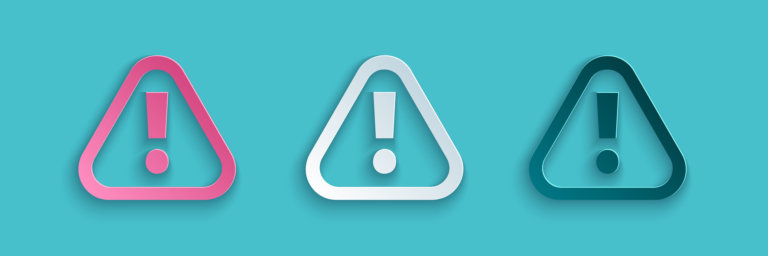We hear from many firms with websites that have been penalized by Google. Sometimes the firm is aware of the cause (working with an agency that violated Google’s rules). Other times, they can’t figure out what triggered the punishment.
Luckily, Google is on your side and wants you to succeed. It is possible for law firms to recover from the dreaded Google penalty by taking steps to rectify the mistake.
Here is a basic explanation of what a Google penalty is, how Google penalties happen, and how to recover from a Google penalty.
What is a Google penalty?
Let’s start with a very important clarification.
A Google penalty is not the same as an algorithm impact.
In most cases, a sudden drop in organic ratings is the result of a Google algorithm update. This means that your website has been demoted because it doesn’t meet the newest quality standards.
A Google penalty is different. It happens when your website violates Google’s Webmaster Guidelines. Google penalties are handed out manually by an in-house webspam team. It can affect a single page or your entire website.
When you get a Google penalty, you’ll see a Manual Action report in the Google Search Console. The result of a Google penalty is that your website may drop in the organic search results—or it may not even appear in the results at all.
How does a Google penalty happen?
There are many, many reasons your website may have received a Google penalty. We’ll cover a few examples below.
Be aware that some agencies purposefully employ deceptive, unethical black hat strategies to try to trick Google. But it’s important to know that you can get penalized for unintentionally disobeying Google’s rules, too.
Here are some of the most common Google penalties:
- Cloaking
- Sneaky redirects or AMP content mismatch
- Spam
- Keyword stuffing and/or hidden text
- Thin content
- Spammy free host
- Unnatural linking
- Violations of the News and Discover policies
Cloaking is when a website shows one thing to web visitors and another thing to Google’s bots. How? It’s a fairly technical process where an incoming visitor is assessed and then redirected to a particular version of the site.
Sneaky redirects are when a user clicks on a link and is taken somewhere they didn’t expect to go. Unethical redirects are meant to artificially increase traffic and manipulate the search results. For instance, an ad could pop up over the top of a user’s content and lead them away to another page just to accumulate clicks. Mobile users could be sent to a different version of the site than desktop users.
Keyword stuffing is when an unusually high number of keywords are stuffed into a page, either in the visible content or hidden in invisible text (aka white text on a white background). Google has gotten really good at detecting hidden text.
Links should be earned, not bought or exchanged. If Google finds that your website is “unnaturally” full of links out and referring domains, you will be penalized. A balanced ratio is approximately 1:1 of external links leading away from your site to external links that lead to your site. Google also keeps a list of link-selling domains, and it will penalize you if your URL Is found on one of these sites.
News and Discover are two policies that govern the algorithm. Google will penalize sites that publish deceptive or violent content. Transparency and disclosure of sponsorship are also very important if you want your site to appear in Google’s News section.
It’s important to note that websites can also be penalized for security issues. This may occur after a website is hacked or if the search engine finds that a site may harm a visitor or their device. (For example, it contains a link to download a harmful virus to the visitor’s computer.)
Can you come back from a Google penalty?
Yes! Once you receive a Manual Action for a Google penalty in the Google Search Console, you can take steps to fix the violation.
The good news is that Google provides insight as to why your site was penalized—but it may only include one example. Your site may be breaking the rules in more than one place.
Recovery from a Google penalty can be time-consuming and complicated. You’ll need to find and fix every instance of rule-breaking. For instance, if links are the problem, the first step may be a comprehensive backlink audit to identify and disavow spammy links.
If your firm is dealing with a Google penalty, we recommend that you invest in an audit from an agency that understands how penalties work. Otherwise, you’ll spend time and money chasing ineffective solutions.
To come back from a Google penalty, you must fix the problem and then submit an explanation of how you’ve resolved the issue by writing a Reconsideration Request.
Review and next steps
In general, you probably won’t find yourself in the penalty box if you don’t attempt to manipulate Google’s rankings for your law firm website.
However, even law firms with good intentions can face Google penalties as the result of misguided solo SEO efforts or hiring a disreputable SEO agency.
Working with a reputable agency to prevent or correct penalties is incredibly important. Google penalties can seriously impede your SEO progress—and they’re easy to avoid if you hire the right agency.

